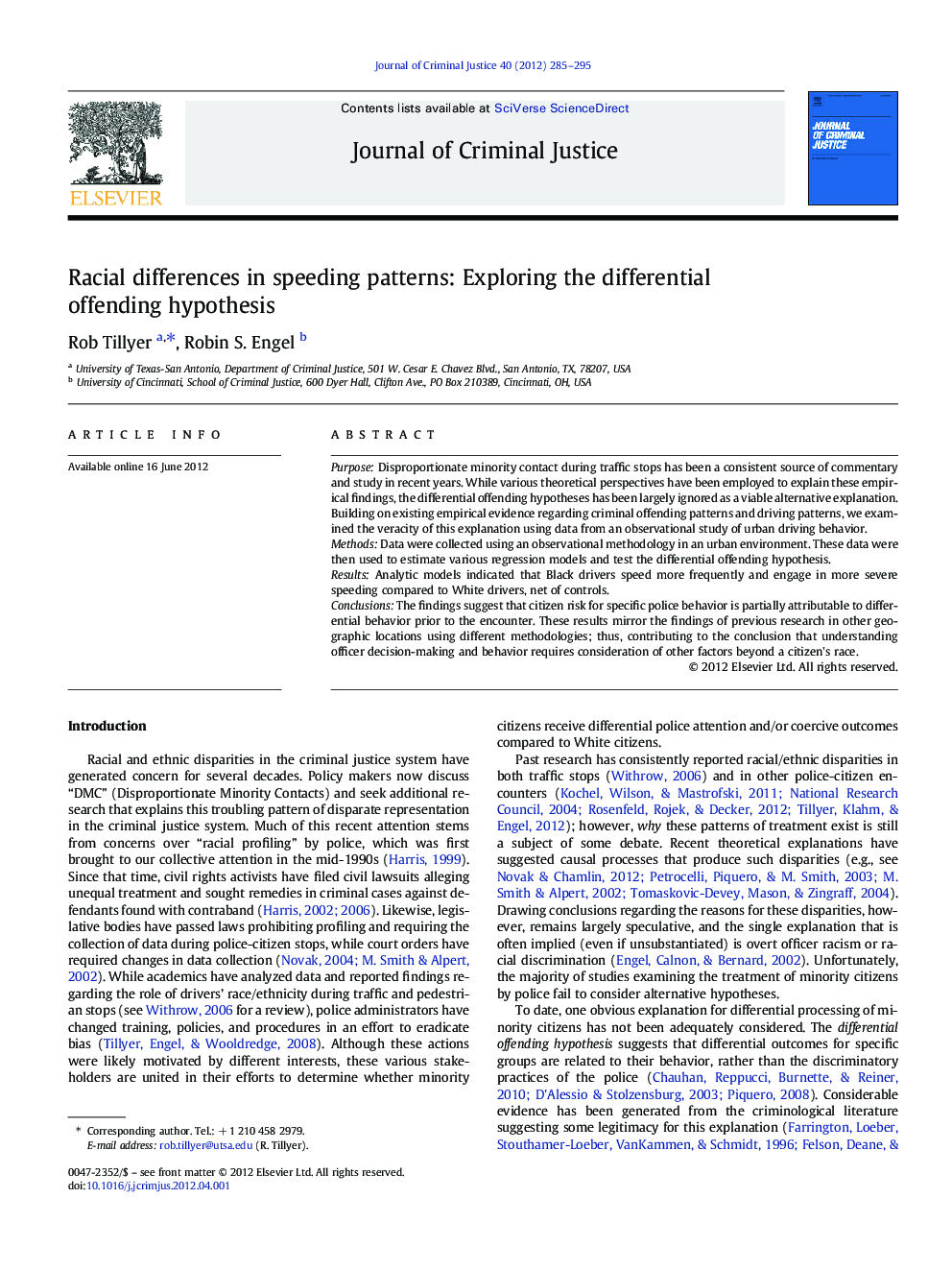| کد مقاله | کد نشریه | سال انتشار | مقاله انگلیسی | نسخه تمام متن |
|---|---|---|---|---|
| 882856 | 912030 | 2012 | 11 صفحه PDF | دانلود رایگان |

PurposeDisproportionate minority contact during traffic stops has been a consistent source of commentary and study in recent years. While various theoretical perspectives have been employed to explain these empirical findings, the differential offending hypotheses has been largely ignored as a viable alternative explanation. Building on existing empirical evidence regarding criminal offending patterns and driving patterns, we examined the veracity of this explanation using data from an observational study of urban driving behavior.MethodsData were collected using an observational methodology in an urban environment. These data were then used to estimate various regression models and test the differential offending hypothesis.ResultsAnalytic models indicated that Black drivers speed more frequently and engage in more severe speeding compared to White drivers, net of controls.ConclusionsThe findings suggest that citizen risk for specific police behavior is partially attributable to differential behavior prior to the encounter. These results mirror the findings of previous research in other geographic locations using different methodologies; thus, contributing to the conclusion that understanding officer decision-making and behavior requires consideration of other factors beyond a citizen's race.
► Recent studies of officer behavior often focus on citizen race.
► The differential offending hypothesis is an alternative explanation.
► Observational data were used to examine this perspective.
► Findings indicate differential speeding patterns by race.
Journal: Journal of Criminal Justice - Volume 40, Issue 4, July–August 2012, Pages 285–295